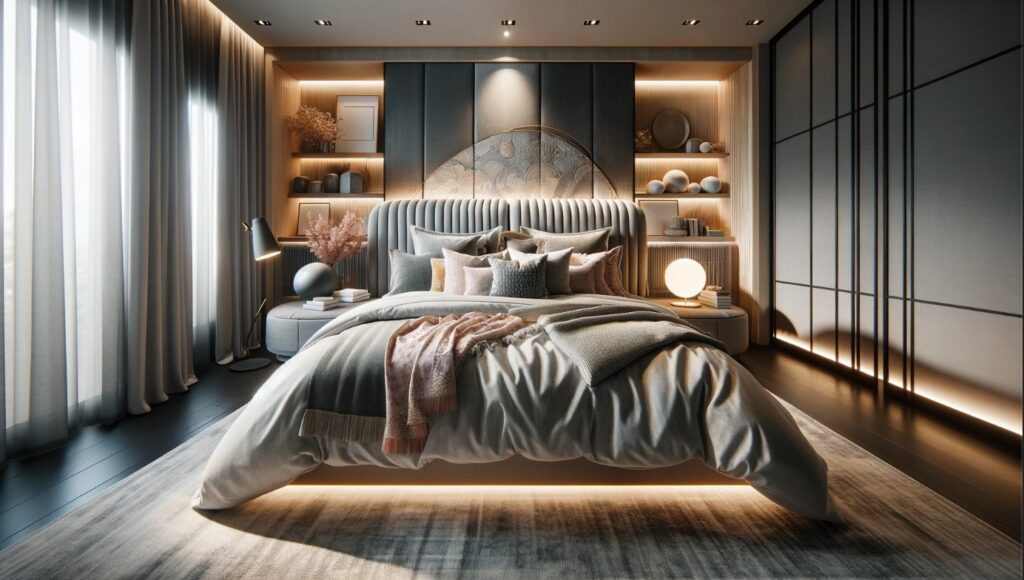Light automation tips in the bedroom can significantly enhance comfort, convenience, and even energy efficiency. Let’s Explore few tips:
Smart Bulbs or Switches for Light Automation
- Smart Bulbs can replace your regular bulbs and connect to your home Wi-Fi network, allowing you to control them via a smartphone app or voice commands through smart assistants like Amazon Alexa or Google Assistant.
- If you prefer not to change your existing bulbs, smart switches can replace your current light switches and provide similar smart functionalities.
Voice Control Smart Assistant
- Integrating your smart lighting system with a voice-controlled smart assistant can add convenience, allowing you to control your bedroom lights hands-free. This is particularly useful when you’re in bed and don’t want to reach for a switch or your phone.
Motion Sensor for Light Automation
- Motion sensors can automatically turn your lights on when you enter the room and off when the room is empty for a set period. This is not only convenient but also energy-efficient.You can implement sensor based light automation in washrooms / dressing area in bedroom.
Dimming and Color Change Features
- Many smart lights offer dimming capabilities and the option to change colors or color temperature. Adjusting these settings can help create the right mood for different times of the day. Such as warmer, dimmer lights for relaxing in the evening and brighter, cooler lights for waking up in the morning.
Schedules and Routines with Light Automation
- Use your smart lighting system’s app to set schedules for your lights to turn on and off at specific times. For instance, you can program your lights to gradually turn on in the morning to simulate a sunrise, making waking up more pleasant.
Compatibility with Smart Home Ecosystem
- Ensure that the smart lighting products you choose are compatible with any existing smart home devices and the ecosystem you’re using, such as Apple HomeKit, Google Assistant, or Amazon Alexa, for a seamless experience.
Explore Scenes and Light Automation
- Many smart lighting systems allow you to create ‘scenes’ or ‘routines’ that adjust multiple lights to predefined settings with a single command. For example, a “Good Night” scene could dim the lights and change their color to a warm hue to help you wind down before sleep.
Prioritize Security and Privacy
- When setting up smart devices, always prioritize your network’s security by using strong, unique passwords and keeping your devices’ firmware up to date to protect against vulnerabilities.


